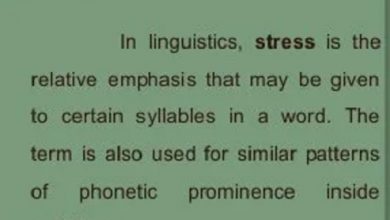Features of English pronunciation with details
The organs of speech are arranged in the same way for all peoples. However, each language has its own characteristics in the sound system, its own ways of pronouncing sounds and phrases. Each language is characterized by a certain way of speech organs and has its own characteristics in the intonation of the sentence. The same applies to English pronunciation. in this article we will elaborate the Features of English pronunciation with examples.
voiced consonants in English at the end of words and before voiceless consonants are not stunned. Voicedness – deafness in English is a meaningful feature, i.e. distinguishes one word from another:
bad (bad) – bat (bat)
Voiceless consonants at the end of words are pronounced very energetically. Voiced consonants are pronounced less vigorously, especially at the end of words.
Most English stop and stop-gap consonants [ t ] , [ d ] , [ n ] , [ l ] , [ s ] , [ z ] , [ tʃ ] , [ d ] are formed when the tip of the tongue touches the alveoli.
Compare:
| shadow – tin [ tin ] – tin |
| day – day [ dei ] – day |
| years – late [ leit ] – late |
| no – name [ neim ] – name |
In English pronunciation, the tense and drawn-out articulation of some vowel sounds and the relaxed and short pronunciation of others are clearly distinguished. For example:
| [ nib ] – [ ni: d ] | nib – need | edge – need |
| [ luk ] – [ lu: p ] | look – loop | look – loop |
| [ kʌm ] – [ kɒ: m ] | come – calm | come – calm |
Longitude in transcription is indicated by a colon after the vowel. Longitude – brevity distinguishes one word from another. For example:
| [ ful ] – [ fu: l ] | full – fool | complete – fool |
| [ liv ] – [ li: v ] | live – leave | live – leave |
| [ kʌt ] – [ ka: t ] | cut – cart | cut – cart |
And also for deafness – voiced :
way – be
tom – house
cathedral – fence
In English pronunciation, consonants are not softened .
In English, there are diphthongs (di – two, phthong – sound), which are indivisible sounds . The first part of the diphthong “core” is pronounced quite clearly, the second part is a slide in the direction of the sounds [ i ] , [ ə ] or [ ʊ ] .
| [ ai ] | [ eə ] |
| [ aʊ ] | [ ʊə ] |
| [ ɔi ] | [ əʊ ] |
| [ ei ] | [ iə ] |
Most English vowel sounds are pronounced with a flat lip , i.e. the corners of the lips are slightly pulled to the sides, and the lips are not rounded or bulging. For example:
| pen [ pen ] – pen |
| sieve [ siv ] – sieve |
| coat [ kəʊt ] – jacket |
Interdental sounds [ ð ] , [ θ ]
For example:
| thick [ θik ] – thick |
| thin [ θin ] – thin |
| they [ ðei ] – they |
| the this [ ðis ] – it |
labio-labial sound [ w ]
For example:
| wait [ weit ] – wait |
| we [ wi: ] – we |
| why [ wai ] – why |
nasal sound [ ŋ ]
For example:
| sing [ siŋ ] – to sing |
| song [ sɒŋ ] – song |
| writing [ `raitiŋ ] – letter |
sound [ r ]
For example:
| write [ rait ] – write |
| wrote [ rəʊt ] – wrote |
| river [ `rivə ] – river |
sound [ ɜ: ] F
| early [ `ɜ: li ] – early |
| girl [ gɜ: l ] – girl |
| turn [ tɜ: n ] – turn |
In English, articulation, i.e. the pronunciation of vowels is almost unaffected by consonants. The vowel sound is the leading one in articulation. In this regard, it is recommended to combine as many different consonants as possible with the vowel when setting the English pronunciation .- led; nose – carried.
